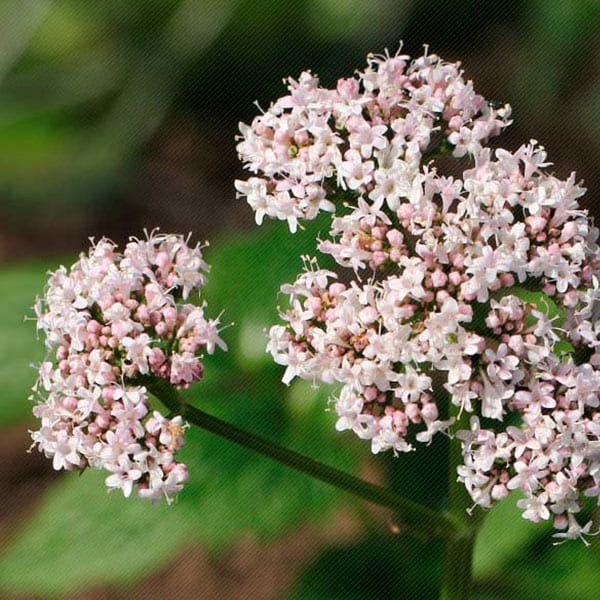Valerian
Common names: all-heal, garden heliotrope, vandal root, capon's tail, amantilla, setwallBackground
Valerian is the common name given to the herbal medication derived from the root of the Valeriana genus of plants, pink-flowered perennials native to the temperate areas of the Americas, Europe, and Asia. The different species of valerian used in various parts of the world – Valerian officinalis in northern europe, Valerian angstifolia in China and Japan, Valerian wallichii in India – are all used for essentially the same purpose. Valerian officinalis is the species most commonly available and studied.
Uses
Valerian is used as a sedative to treat insomnia and anxiety. Virtually all herbal sleep-aid preparations contain valerian. During World War I, “shell-shocked” soldiers were treated with valerian. Valerian also promotes smooth muscle relaxation and may be used to treat gastrointestinal hyperactivity.
Phytochemistry and pharmacology
Valerian contains multiple chemical constituents that act synergistically. These include volatile oils (sesquiterpenes and monoterpenes), valepotriates, alkaloids, and lignans. The sesquiterpenes are considered the primary source of the pharmacological effects. At least 17 sesquiterpenes have been characterized. Some commercial preparations are standardized to valerenic acid content, a sesquiterpene that exists nowhere else in nature. The valepotriates have also been characterized and consist of a furanopyranoid monoterpene skeleton found in glycosylated forms known as iridoids. At least 37 valepotriates have been isolated. They act as prodrugs that are metabolized into compounds more active than the parent compound. The pharmacological action of the other constituents of valerian is unclear. Seven alkaloids have been isolated but not well-studied. GABA and various amino acids have been isolated from the aqueous portion of valerian, but their bioavailability remains in question.
Valerian produced dose-dependent sedation and hypnosis in pre-clinical studies. The sesquiterpenes and, to a lesser extent, the valepotriates, increased barbiturate sleep time in animals. Valerian extract 11.2 g/kg was equivalent to diazepam 3 mg/kg in doubling hexobarbital sleep time in mice. Valerian had weak anticonvulsant properties in mice. In isolated guinea-pig ileum, relaxation of smooth muscle by valerian was peripherally mediated.
Valerian produced dose-dependent EEG changes in humans consistent with sedation. The pharmacodynamic studies of valerian in humans have focused on the sleep setting. Modest improvements in subjective ratings of sleep were reported, but objective measurements were inconsistent. Subjective and objective measurements of sleep improved after multiple but not single-dose treatment.
The biological activity of valerian is consistent with the modulation of GABA inhibitory neurotransmission. Constituents of valerian extract have effects at the GABAA receptor. Valerian extract influences presynaptic components of GABA-ergic neurons, although the mechanism of action is unclear. It also influenced GABA synaptosomal release,, inhibited GABA reuptake, and inhibited GABA break down.
The pharmacokinetics of the active constituents of valerian have not been studied. The subjective effects of valerian are short-lived with no demonstrable psychomotor effects the morning after treatment. Multiple doses per day are needed for treatment of anxiety, and peak effect occurs 1-2 hr after oral administration.
Safety
Short-term use of valerian is safe. Because of its GABA receptor activity, the long-term use of valerian may be associated with a benzodiazepine-like withdrawal syndrome. In fact, valerian attenuated benzodiazepine withdrawal in rats. In one patient, the long-term use of valerian was associated with a life-threatening benzodiazepine-like withdrawal syndrome after surgery.
Use during pregnancy or by nursing mothers is not recommended.
Preparations and dosage
Commercial valerian preparations consist of the dried extract of the root and may be standardized to a minimum level of valerenic acid or other selected constituents. As a sleep aid, the recommended dosage of valerian extract is 400 – 900 mg taken 30 min before bedtime. For anxiety, the recommended dosage of valerian extract is 220 mg of extract three times daily. The daily dosage of valerian extract should not exceed 1800 mg, and it is not meant for long-term use.

